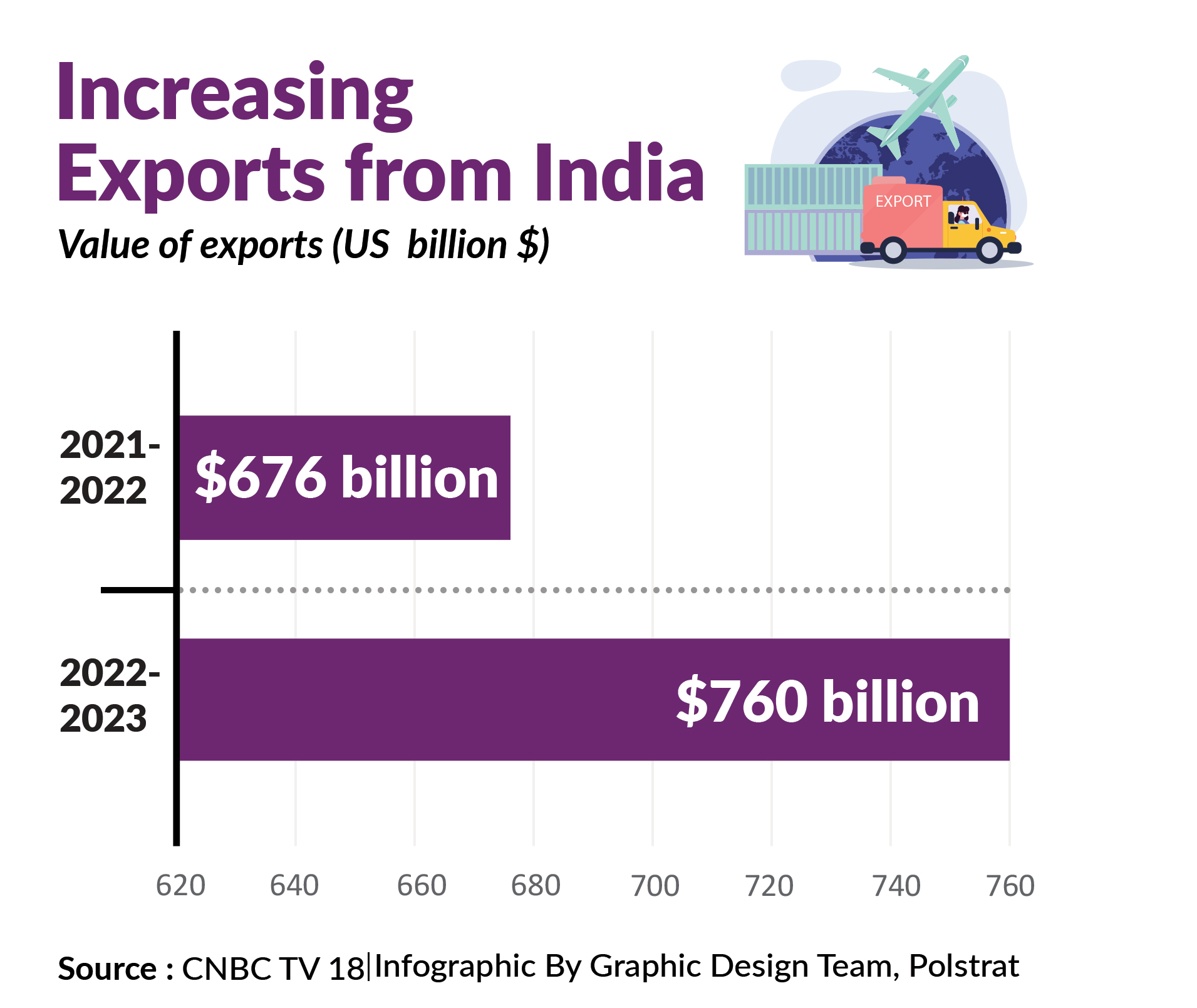


In 2015, the Government of India (GoI) published a five-year Foreign Trade Policy (2015-2020), which focused on increasing exports and promoting the “Make in India” initiative. The policy aimed at increasing the country’s share of world exports to 3.5 percent from 2 per cent.
The policy included measures to achieve these targets, including simplifying procedures for import and export, reducing the cost of doing business, and promoting export-oriented industries. Some of the key schemes introduced included the Merchandise Exports from India Scheme (MEIS) and the Services Exports from India Scheme (SEIS) to provide financial incentives to exporters.
In addition to these measures, the government also focused on improving infrastructure and logistics to reduce transaction costs and enhance the competitiveness of Indian exports. The government launched the Sagarmala project to improve port infrastructure and the Bharatmala project to improve road connectivity across the country. Although the previous term of the five-year policy had ended in March 2020, this was extended repeatedly due to the COVID-19 pandemic and the subsequent lockdowns. The policy was last extended in September 2022 until 31st March, 2023, after which the new FTP was announced and came into effect.
The FTP 2015-20 contributed significantly to the growth of India’s export in merchandise and services, which increased from $435 billion in the 2016 financial year to $676 billion in the 2022 financial year and is expected to increase to $760 billion in 2022-23 financial year. Schemes introduced in the FTP 2015-20, such as the SEIS, played a critical role in incentivising service exports and promoting India as a global services hub. The Indian government also engaged in negotiations for the Regional Comprehensive Economic Partnership (RCEP), which would have been the world’s largest free trade agreement. However, in 2019, the government of India withdrew from the RCEP negotiations as they said they were concerned about the impact this would have on domestic industries. The move was criticised by several economic experts, who believed the RCEP would have helped India integrate with global value chains and gain increased access to global markets. Despite the extension of the FTP’s term from 2020 to 2023, the government was short of fulfilling its target of increasing merchandise exports to $800 billion.